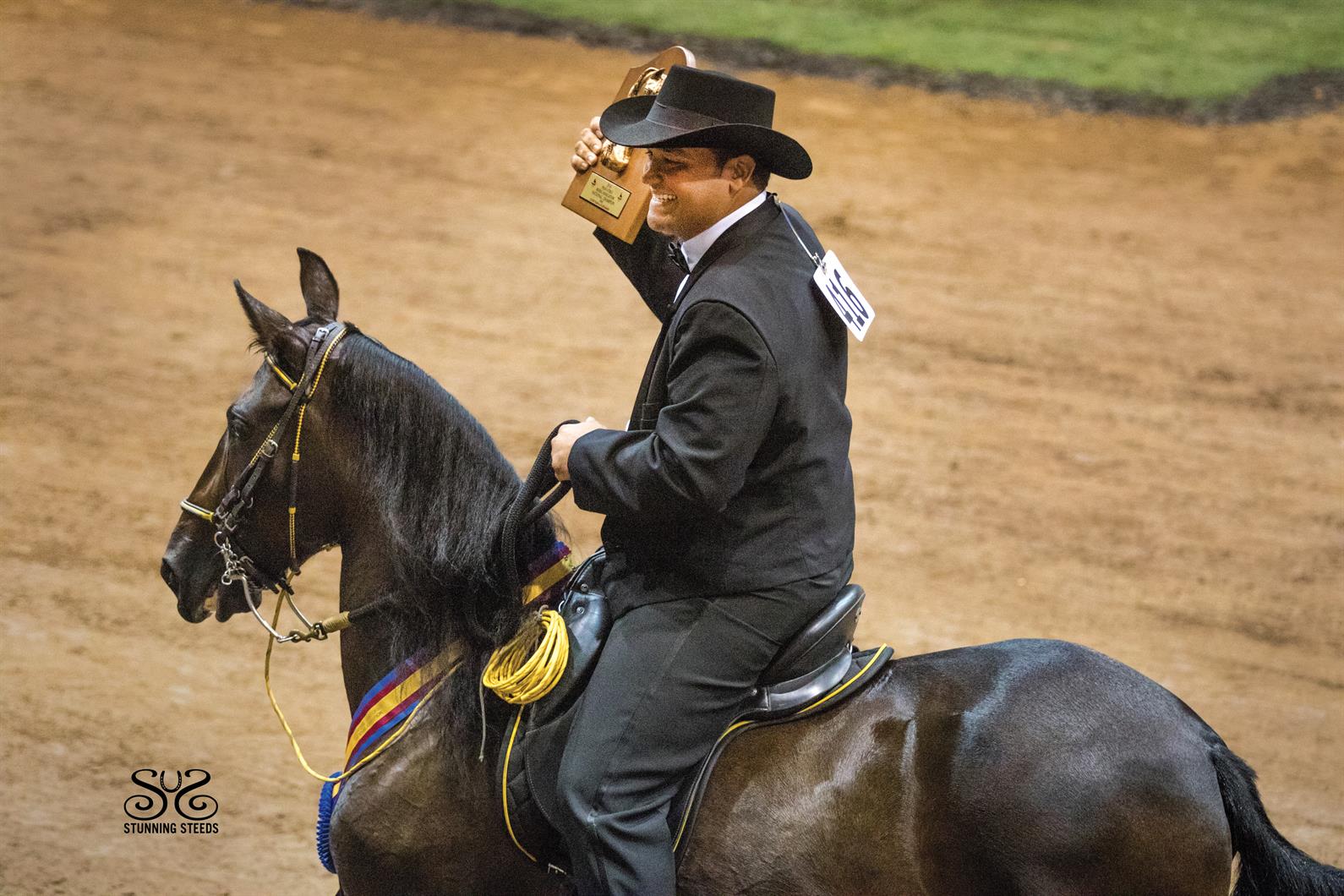
Photo: Stunning Steeds
The Paso Fino Horse Association Grand National Championship Show takes place Sept. 16-21 at the Georgia National Fairgrounds in Perry, Ga.—watch it live now at USEF Network.
Hosted by the Paso Fino Horse Association through Sept. 21, the show will deliver six days of world-class competition, featuring the best Paso Fino horses in the nation exhibited by professionals, amateurs, and young equestrians.
Need an introduction to this graceful, smooth-gaited breed whose name means “fine step”? Here are five facts to know when you tune in to watch the show.
1. The Paso Fino’s origins go back to the Spanish conquistadors.
The Paso Fino’s arrival in North America began more than 500 years ago with the Spanish conquistadors, who brought Andalusians, Spanish Barbs from North Africa, and smooth-gaited Spanish Jennets (now extinct) to the New World.
Bred for their stamina, smooth gait, and beauty, “Los Caballos de Paso Fino”—the horses with the fine step—served as the foundation stock for remount stations of the Conquistadors. Centuries of selective breeding by those who colonized the Caribbean and Latin America produced variations of the “Caballo de Criollo,” among them the Paso Fino, which flourished initially in Puerto Rico and Colombia, and later in many other Latin American countries (primarily Cuba, the Dominican Republic, Aruba, and Venezuela). Descendants of the Conquistadors’ horses are believed to have spread into North America after the Spanish soldiers forayed for a brief time into this territory.
Awareness of the Paso Fino as we know it today didn’t spread outside Latin America until after WWII, when American servicemen came into contact with the stunning Paso Fino horse while stationed in Puerto Rico. Americans began importing Paso Finos from Puerto Rico in the mid-1940s. Two decades later, many Paso Fino horses began to be imported from Colombia. For a while, there was some debate as to which country produced the “true” Paso Fino. Though there are still some self-professed “purists” who advocate for one or the other country, the American Paso Fino—true to our “melting pot” tradition—is often a blend of the best of Puerto Rican and Colombian bloodlines.
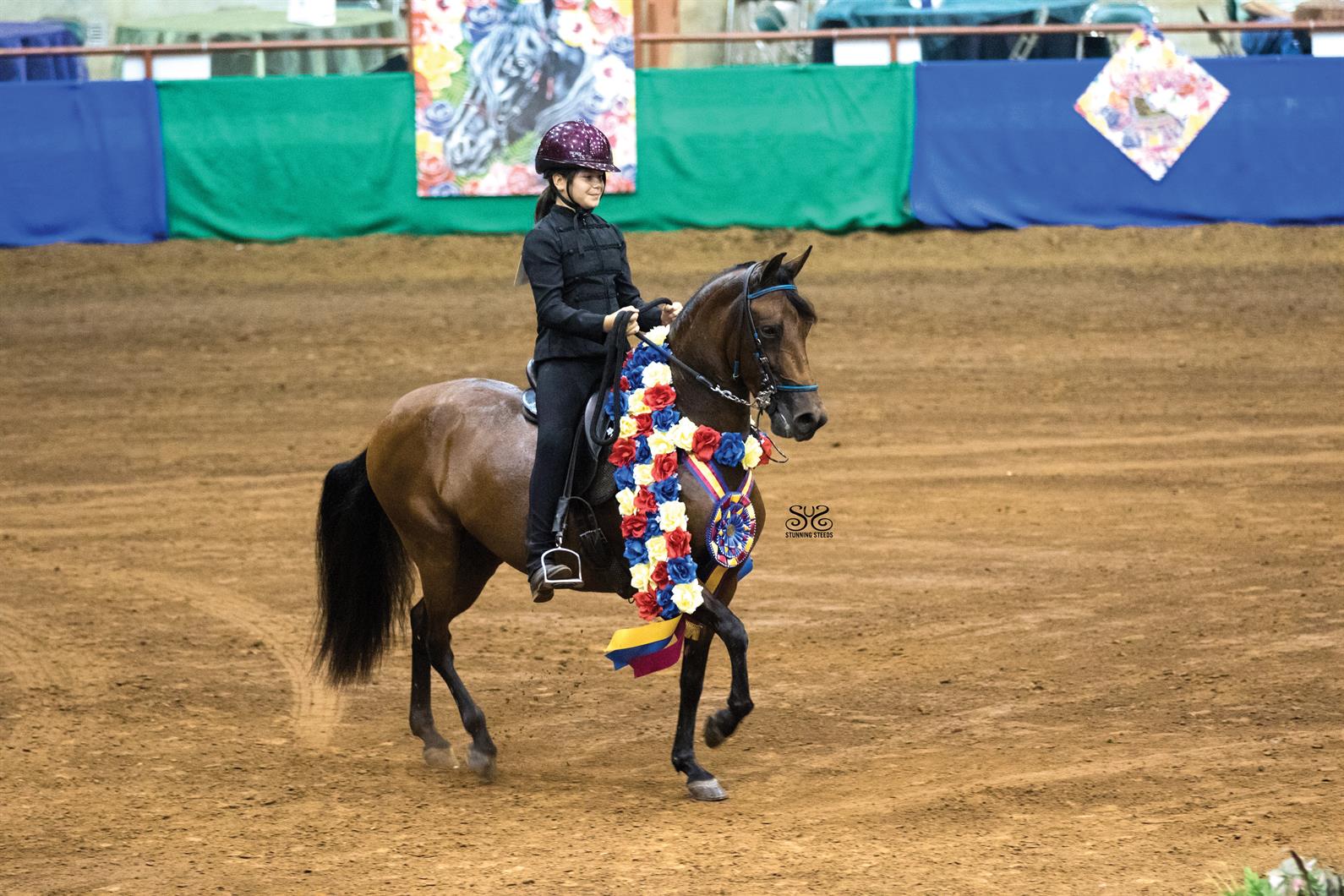
Photo: Stunning Steeds
2. Paso Finos’ unique gait is natural and super-smooth.
The Paso Fino is born with a gait unique to the breed, and its attitude seems to transmit to the observer that this horse knows its gait is a very special gift that must be executed with style and pride! The gait is smooth, rhythmic, purposeful, straight, balanced in flexion, and synchronous front to rear, resulting in unequalled comfort and smoothness for the rider—in fact, the Paso Fino is known as “the smoothest riding horse in the world.” The Paso Fino is a graceful, agile, and supple equine athlete that uses all four legs with precision and harmony. Click here to watch a video about the Paso Fino's gaits.
The gait of the Paso Fino horse is totally natural and normally exhibited from birth. It is an evenly-spaced, four-beat lateral gait with each foot contacting the ground independently in a regular sequence at precise intervals, creating a rapid, unbroken rhythm. Executed perfectly, the four hoof beats are absolutely even in both cadence and impact, resulting in unequaled smoothness and comfort for the rider. The Paso Fino gait is performed at three forward speeds and with varying degrees of collection. In all speeds of the gait, the rider should appear virtually motionless in the saddle, and there should be no perceptible up-and-down motion of the horse’s croup. The gait is an evenly spaced, four-beat gait, and the speeds, from slowest to fastest, are
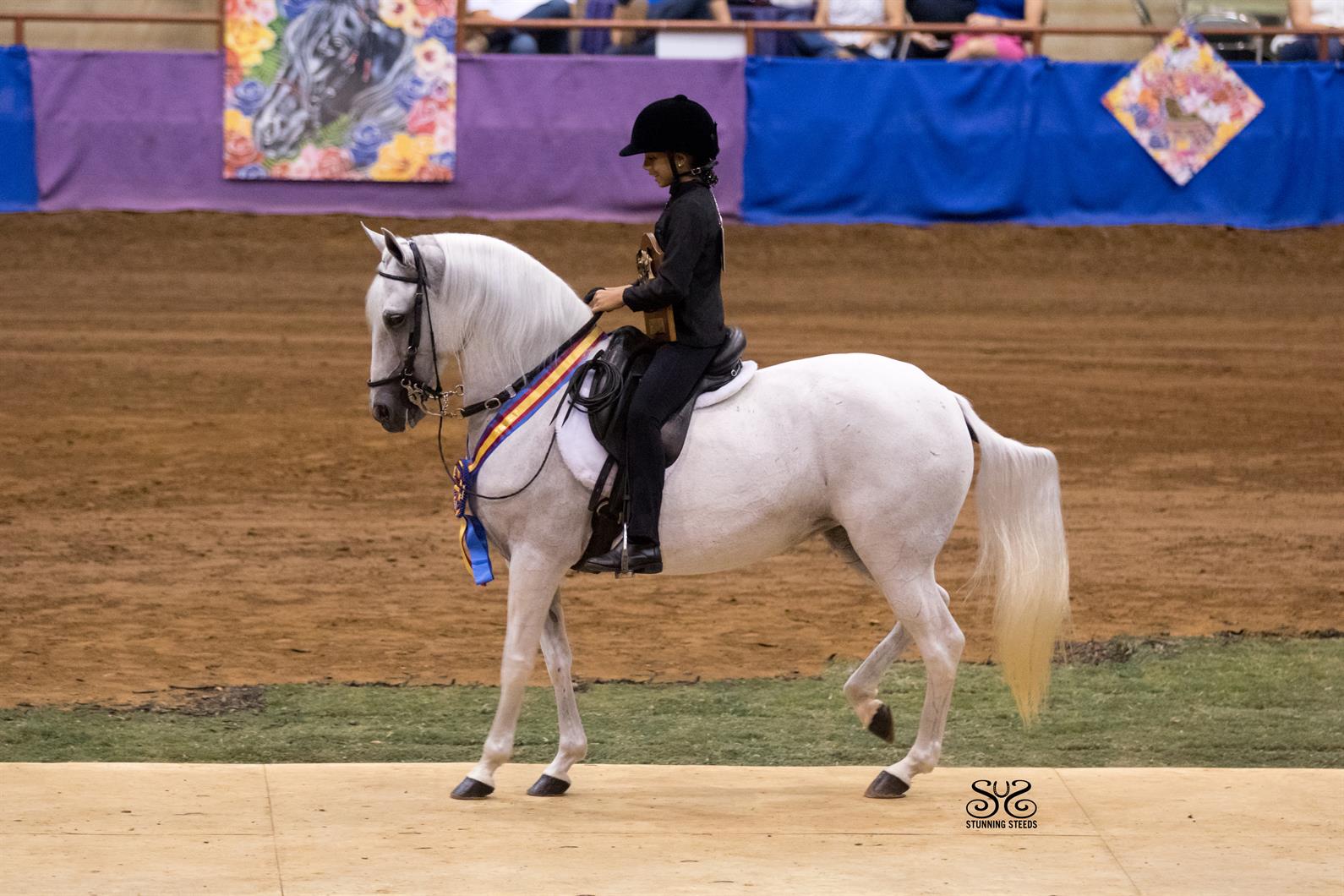
Photo: Stunning Steeds
- Classic Fino – Full collection, with very slow forward speed. The footfall is extremely rapid, while the steps and extension are exceedingly short.
- Paso Corto – Forward speed is moderate, with full to moderate collection. Steps are ground-covering but unhurried, executed with medium extension and stride.
- Paso Largo – The fastest speed of the gait, executed with a longer extension and stride, and moderate to minimal collection. Forward speed varies with the individual horse, since each horse should attain its top speed in harmony with its own natural stride and cadence. Extension and flexion must be harmonious, with no tendency to become “light” on the front or “strung out” behind.
Paso Finos also can execute other gaits that are natural to horses, including the flat walk and lope or canter.
As you might expect, training Paso Finos comes with its own set of approaches. A strong foundation in classical training is critical for any horse, and Pasos are no different. What makes them unique is that they are highly sensitive, intelligent, and willing. Where you might have to drill some horses repeatedly, Pasos often retain things on the first try. They are also very responsive, so a light touch will work better and they respond quickly to commands. The natural gait requires good flexibility, so you will often see trainers stretching to keep them supple. Pasos have up to three feet off the ground at any given time, with no upward suspension in the gait, allowing you to enjoy the smoothest ride around.
3. The Paso Fino is versatile.
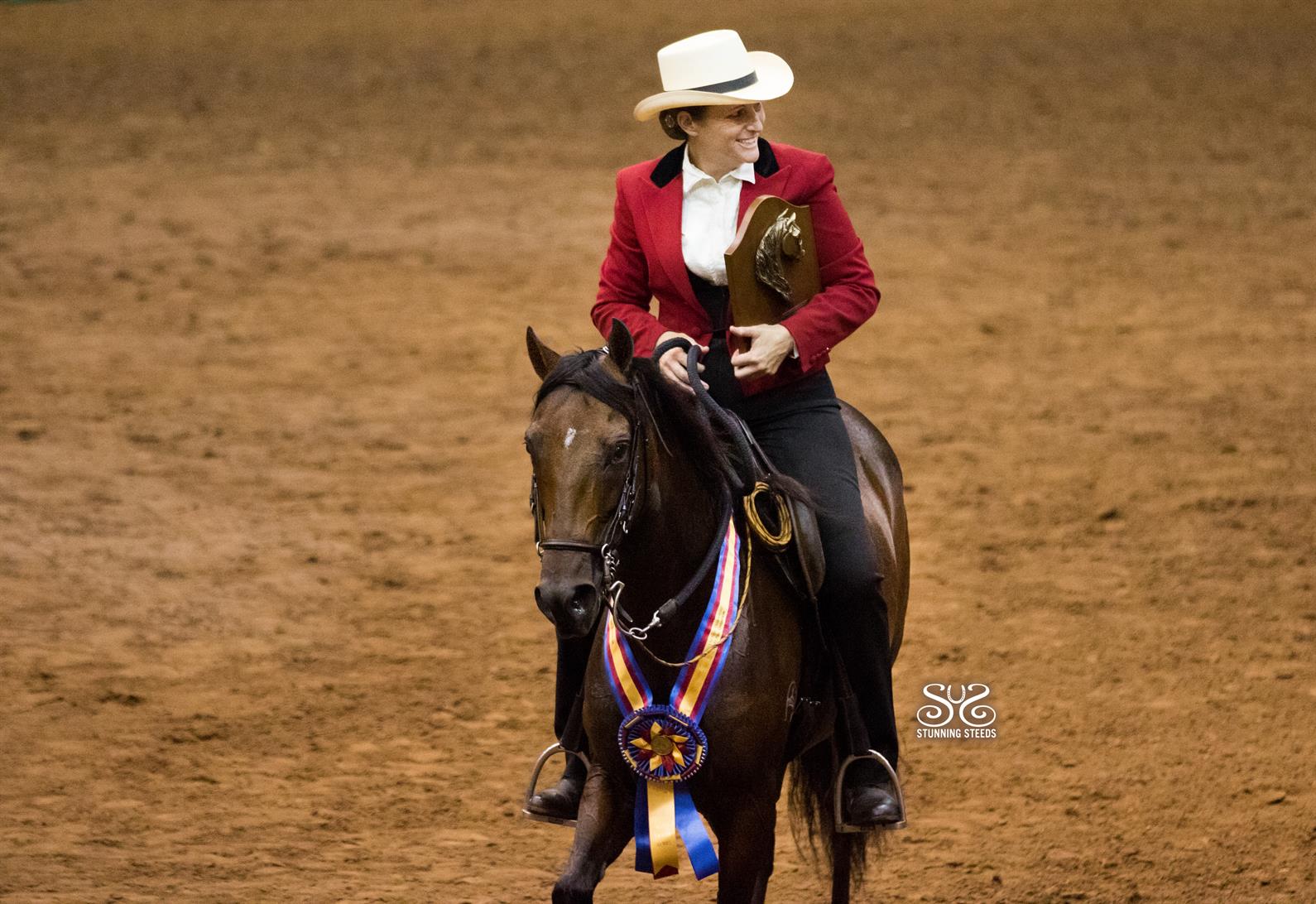
Photo: Stunning Steeds
There are a variety of classes and divisions, including in-hand classes, pleasure, performance, trail, and versatility, which also includes a jump!
- Classic Fino – The only gait performed is the Classic Fino.
- Performance – Horses perform the collected Corto, collected Largo, and collected walk.
- Pleasure – The gaits performed are the mildly collected Corto, the midly collected Largo, and flat-footed walk. Manners and obedience are especially important.
- Specialty – These classes demonstrate the versatility of the breed and can include pleasure driving, trail, Western pleasure, costume, and versatility classes. In the versatility classes, the horse must perform a flat walk, the Paso Corto, the Paso Largo, and the Canter, and must also jump a 2’, single-rail obstacle.
- Bellas Formas – The horse is shown in hand, and the choice of gait may be either the Classic Fino or Paso Corto. Judged on both conformation and gait.
Outside the show ring, Pasos participate in long-distance events (such as endurance, competitive, and pleasure long-distance riding), dressage, a variety of sport horse programs, barrel racing, jousting, trail riding, and more!
4. There are also Diagonal Paso Horses.
Diagonal Paso Horses can be ridden collected or with extension, which contributes to their great versatility. In their native Colombia, they are prized as ranch horses and show horses, while in the United States they are used for showing in a variety of competitive divisions, as well as for pleasure and trail riding. The term Diagonal Paso Horse usually refers to any of three particular breeds: the Colombian Trote y Galope horse, the Trocha horse, and the Trocha y Galope horse.
- Colombian Trote y Galope – Fairly new to the U.S., this breed developed originally as a cross between the Lusitano and Paso Fino breeds. The Lusitano contributes to the height, power, and diagonal gait, while the Paso Fino influence is in the horse’s brio (spirit), quickness, sensitivity to aids, and smoothness of movement.
The “trote” is a two-beat, much exaggerated diagonal gait, but without suspension. The trot is powerful but comfortable, and there is no need to post. The horses look as if they are marching.
The “galope,” or canter, is a movement of forward diagonal propulsion in three beats: the first stage begins with the striking of one hind leg; the second stage is taken by the opposite hind leg and the foreleg diagonal to it; then the third stage is completed when the last foreleg hits the ground. The beat makes a 1-2-3, 1-2-3 sound.
Typically, these horses’ manes are roached. This originally was done for practical purposes, as many are working horses in Colombia. It is not a requirement for show, but it is done in order to accentuate their characteristically thick, regal necks.
- Trocha – Highly prized in its native Colombia, the Trocha horse performs one gait during competition, a smooth, four-beat diagonal Paso gait. The “trocha” is measured in a rhythmical and harmonious tempo but in four beats, identified by the sound produced by the four beats when the sequence of the cycle is performed. Its sound follows a 1-1-1-1- rhythm.
The Trocha horse is shown fully collected with rapid, fluid, powerful footfalls. The Trocha horse usually possesses a long, full mane.
- Trocha y Galope – This breed is similar to the Trocha but must also perform the galope gait with a very elegant, smooth, collected frame and controlled forward movement. Typically, their manes are roached.
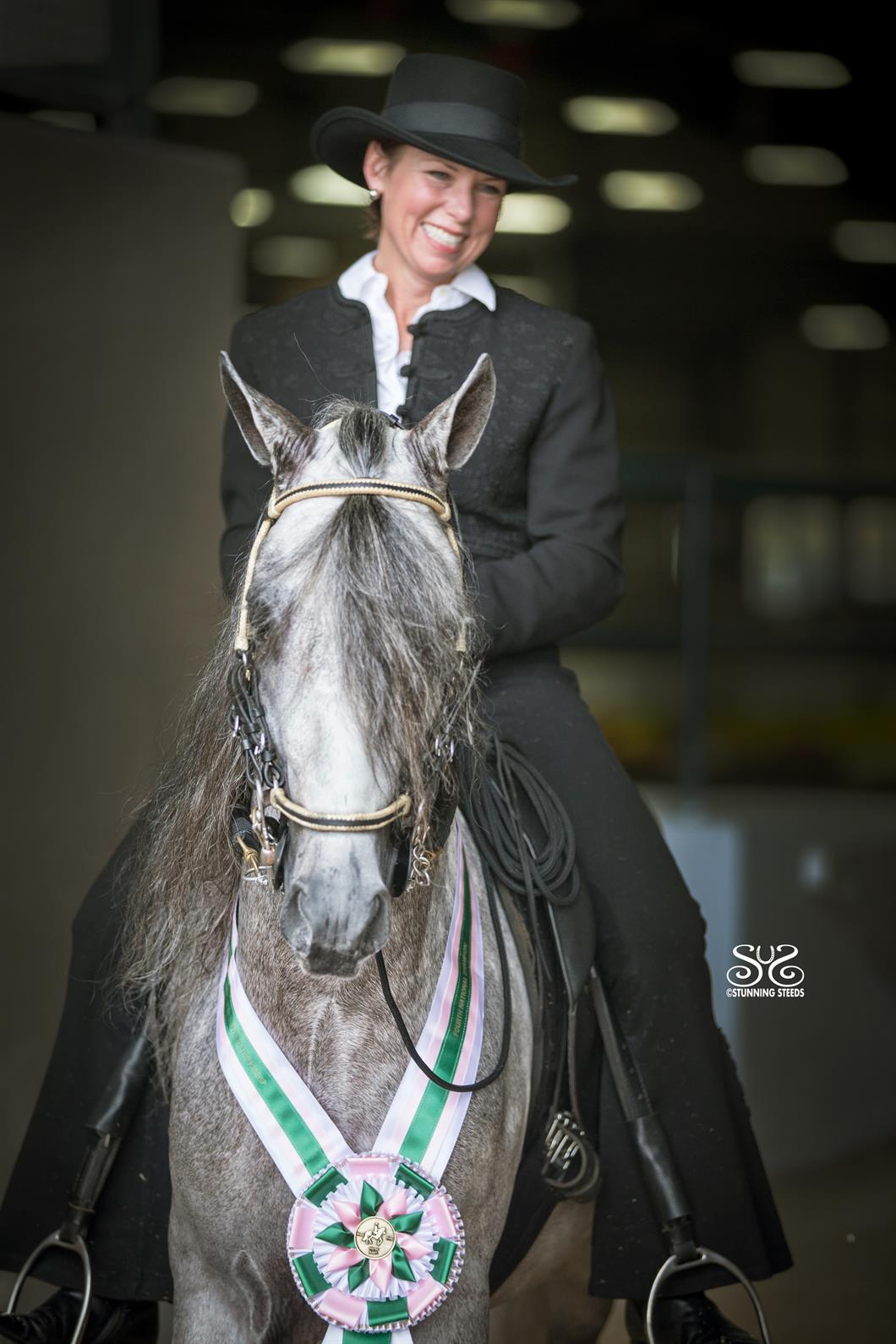
Photo: Stunning Steeds
5. Different classes require different show attire.
The equestrian’s style of clothing changes according to the type of class.
- Official Paso Fino show costume features a long-sleeved bolero jacket (over a long-sleeved shirt or blouse) and full-length riding pants or a jumpsuit that covers the boots; jacket and pants or jumpsuit must be conservative in color and trim. The exhibitor must also wear a Spanish-type felt, leather, or suede hat with a round, flat crown and with a flat or slightly rolled brim. Worn in Bellas Formas, Classic Fino, performance, and adult equitation classes.
- English/plantation style show costume consists of a long-sleeved shirt, full-length trousers, tailored jacket or vest, hat, and riding boots. Boots are English, with a rounded toe and some heel. Women riders may wear skirts, culottes, or gaucho pants that are long enough to cover the knees when the rider is in the saddle, along with knee-high boots. Hats are straw, usually in cream or black. This attire is seen in pleasure, versatility, trail, country pleasure, and pleasure driving classes.
- Western show costume features a Western-type hat, long-sleeved Western shirt, full-length trousers, and Western boots, along with chaps, shotgun chaps (with zippers close to the legs), or chinks (shorter leggings, which enclose the leg from the waist to just below the knee). A jacket or vest is optional. This costume is worn in pleasure, Western pleasure, trail, country pleasure, and pleasure driving classes.
Learn more about the Paso Fino by visiting the Paso Fino Horse Association and US Equestrian’s Paso Fino page. And tune in to the PFHA Grand National Championships on USEF Network now for exciting action from the competition!
Want more articles like this delivered to your inbox every week? Sign up here to receive our free Equestrian Weekly newsletter.
This article is original content produced by US Equestrian and may only be shared via social media. It is not to be repurposed or used on any other website aside from usequestrian.org.


